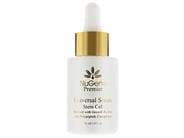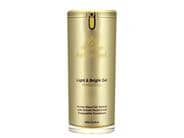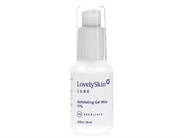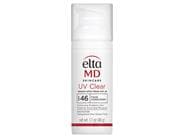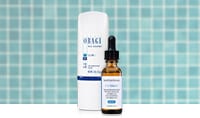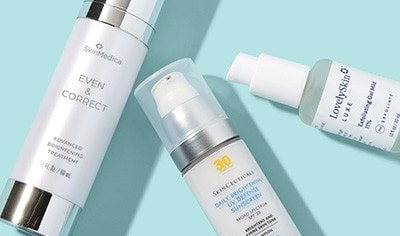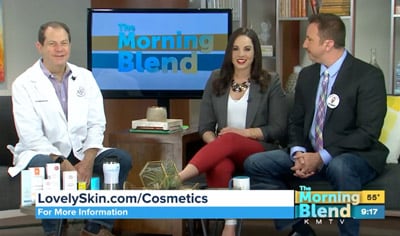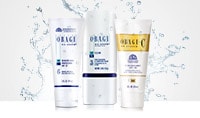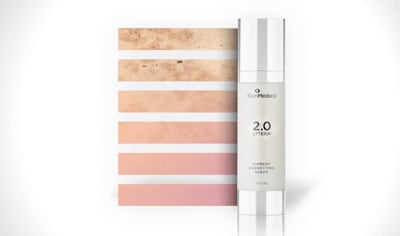How to Prevent Types of Hyperpigmentation - Freckles, Dark Spots, etc

Hyperpigmentation is a darkening of the skin caused by an overproduction of melanin, the pigment responsible for skin color. It may cover large areas of the face and body or appear in small patches, and though it can affect anyone of any age, it’s typically considered a natural part of the aging process. In this LovelySkin blog, we’ll cover the most common types of hyperpigmentation to kick off our week-long mini series on addressing an uneven skin tone.
Melasma
Melasma causes brown or gray-brown patches to appear on the cheeks, forehead, upper lip, bridge of nose and chin. Like most other forms of hyperpigmentation, melasma is considered harmless and more of a cosmetic nuisance. About 90% of those who develop melasma are women, and the condition is also more common in people of color. It may be triggered by exposure to the sun or hormonal fluctuations, and in fact, melasma is often referred to as “pregnancy mask” since it is so common during this time. When melasma is triggered by pregnancy, it is called chloasma. Other triggers include birth control pills and certain medications.
Post-Inflammatory Hyperpigmentation
Post-inflammatory hyperpigmentation appears as a result of injury to the skin. The skin naturally produces more melanin to fend off inflammation, and chronic inflammatory skin conditions and infections are among the main culprits for hyperpigmentation. Dermatitis, psoriasis, acne, fungal infections and warts are among leading conditions that trigger discoloration, as is trauma to the skin, including burns and wounds. Post-inflammatory hyperpigmentation is characterized by a flat area of discoloration that may be red, pink, purple, brown, or black, depending on skin tone and extent of the skin’s inflammatory response. Though it is often confused with acne scars, post-inflammatory hyperpigmentation is not considered a scar since it often fades on its own over a period of months.
Dark Spots
Dark spots, brown spots, age spots, sun spots…whatever you choose to call them, they often accompany aging skin, and they are the number one type of hyperpigmentation. Though the cause of dark spots isn’t always clear, sun exposure and tanning bed use seem to be leading factors. Dark spots range in color from light brown to black, depending on skin tone, and they are typically found on the face and areas of the body that are frequently exposed to the sun, such as the backs of hands, shoulders, forearms and chest. Dark spots are not considered dangerous to health, but many consider them unsightly and choose to address them with topical treatments.
Freckles
Freckles are tiny, flat, tan, brown or black spots. They usually appear in clusters or patches on sun-exposed areas, and are most common in those with fair skin. Freckles are often hereditary, but they may also be caused by sun exposure from a young age, with those as young as one to two years of age developing them. Freckles are harmless, but there is a small chance they could develop into skin cancer. Any irregular or evolving freckles should be examined by a dermatologist. Freckles should also not be confused with moles, which are larger, darker spots that may be flat or raised.
Preventing Hyperpigmentation
Though different types of hyperpigmentation may have various causes, sun exposure is known to darken discoloration no matter the initial trigger. Protecting your skin from UVA and UVB rays can help you prevent dark spots in the long run and allow you keep existing discoloration and other signs of aging under control. You should apply sunscreen daily, rain or shine, whether you plan to go outdoors or not. We recommend EltaMD UV Clear Broad-Spectrum SPF 46 Sunscreen for the face in either tinted or untinted, and EltaMD UV Sport Water-Resistant Broad-Spectrum SPF 50 for the body.
You can browse a wide selection of products designed to address hyperpigmentation here. We love NuGene NuLight Light & Bright Gel and NuGene NuCell Universal Serum. Each of these breakthrough treatments features innovative technology and patented ingredients that work to break down excess melanin and create a bright, even tone. Human growth factors, polypeptides, vitamins, minerals and amino acids help smooth skin and address firmness for an overall more youthful look.
We also recommend LovelySkin Exfoliating Gel Mild 11%. This leave-on treatment contains a blend of amino fruit acids and Dead Sea minerals to help remove dulling debris and promote a more even complexion. It also helps to keep breakouts under control and minimize the appearance of fine lines and wrinkles.
Don’t forget to check in at the LovelySkin blog later this week for information about treating hyperpigmentation, as well as some of the best skin care regimens for minimizing discoloration.
Do you have a question about hyperpigmentation? Let us know in the comments section.
Shop this blog

About the Author
Stepha is a copywriter at LovelySkin. She loves poetry, baking and experimenting with new makeup.
Other Posts by StephaFollow us on social
Follow us on social networks and be one of the first to learn about sales, giveaways, and free samples

